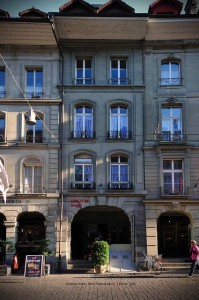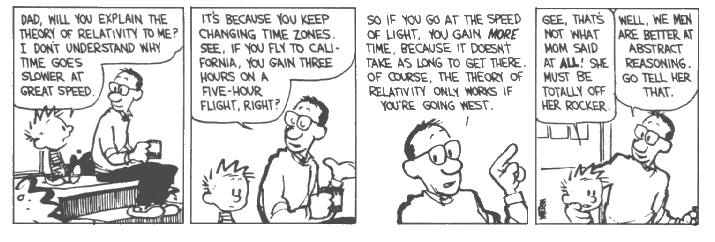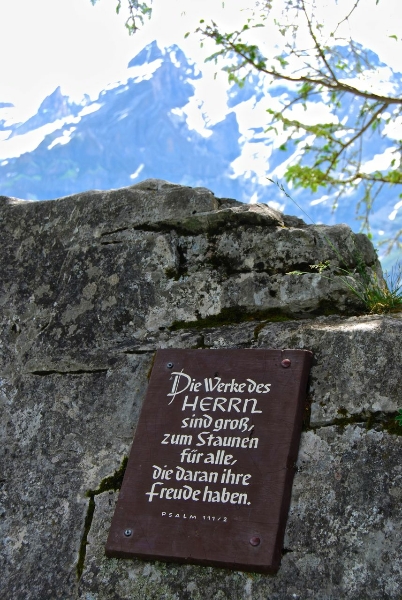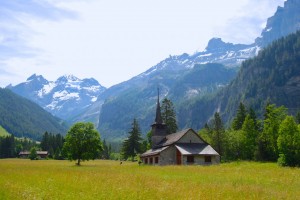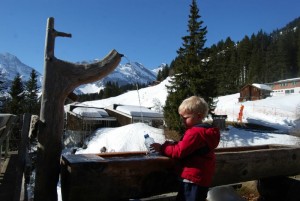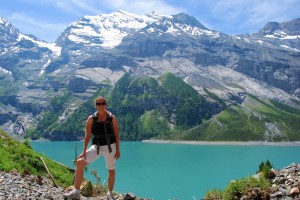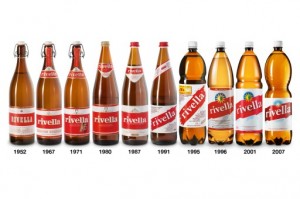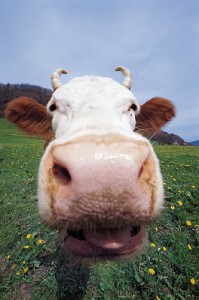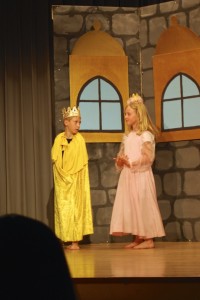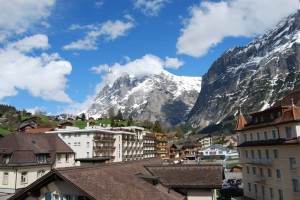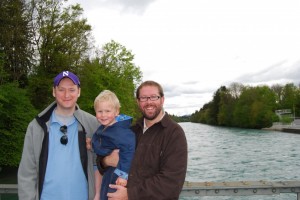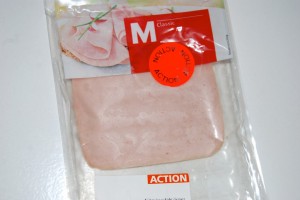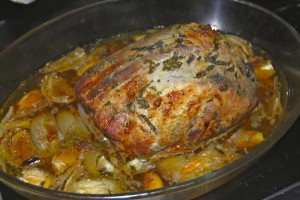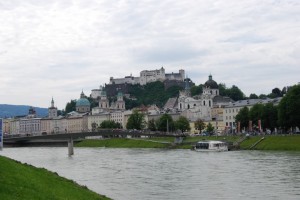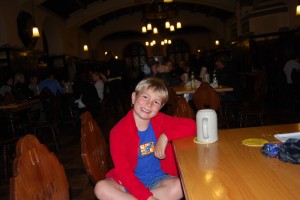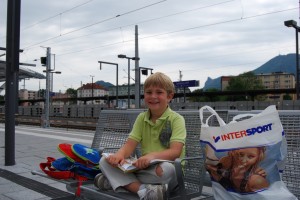Last Saturday we left for our last family vacation during our year in Switzerland. We stayed three nights in Meiringen, a beautiful town just East of Lake Brienz at the foot of the Hasliberg mountain. There are several things in the area that we had wanted to see and do, so we checked them all off in 4 jam-packed days. On Saturday, after traveling to Meiringen by train and checking in at our hotel, we returned to the town of Brienz. We ate a late lunch in an outdoor restaurant overlooking the lake. Then we boarded the 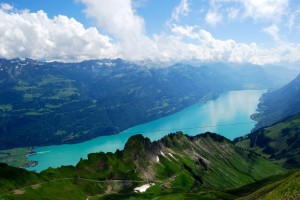 Rothornbahn, a 100-year-old cog-wheel steam train that still takes tourists on a beautiful hour-long trek up the mountain to the Rothorn Kulm, which has a stunning view over the lake and surrounding mountains. That was all we could manage on the first day, so we returned to the hotel where the kids played on the little playground before getting ready for bed.
Rothornbahn, a 100-year-old cog-wheel steam train that still takes tourists on a beautiful hour-long trek up the mountain to the Rothorn Kulm, which has a stunning view over the lake and surrounding mountains. That was all we could manage on the first day, so we returned to the hotel where the kids played on the little playground before getting ready for bed.
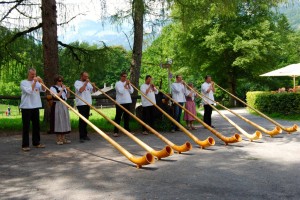 On Sunday we visited Ballenberg, a Swiss “outdoor museum” that features buildings from around Switzerland dating from the 16th to the 19th century. They strive to preserve the history of Swiss culture and architecture. We saw a beautiful Victorian era Swiss home, herdsmens’ sheds, working mills, cheese-making huts, and more. We watched people grinding wheat, weaving cloth, and making charcoal. We were even serenaded by an alphorn ensemble during lunch.
On Sunday we visited Ballenberg, a Swiss “outdoor museum” that features buildings from around Switzerland dating from the 16th to the 19th century. They strive to preserve the history of Swiss culture and architecture. We saw a beautiful Victorian era Swiss home, herdsmens’ sheds, working mills, cheese-making huts, and more. We watched people grinding wheat, weaving cloth, and making charcoal. We were even serenaded by an alphorn ensemble during lunch.
On Monday, we stayed in Meiringen to see two of its best-known attractions. First we walked over to the Aare Gorge (Aareschlucht) and walked 1.4 kilometers through the narrow, towering gorge. Much of the trail is man-made with wooden planks on a frame bolted to the rocky walls. The Aare river rushes below your feet, the mist moistens your skin and drips from the walls, and the sunlight bounces off the walls. It was fantastic. Then we headed over to the funicular that would take us up to see Reichenbach Falls, the 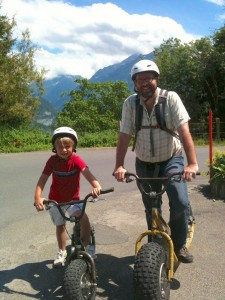 location of Sherlock Holmes’s infamous demise. The falls are tall and imposing, rushing over the side of a cliff several hundred feet before crashing the rest of the way down the mountain. We hiked up the trail along the falls and across a bridge over the falls before getting to the top where a restaurant is perched on the mountain. After having a little lunch there, James and Joe opted to descend the mountain on the “Monster Trotti Bikes,” which were like giant scooters with hand brakes. Meanwhile, I returned with Emily and Henry to the funicular and we all met back at the hotel. The afternoon we filled with a little shopping and dinner at a restaurant in Brienz.
location of Sherlock Holmes’s infamous demise. The falls are tall and imposing, rushing over the side of a cliff several hundred feet before crashing the rest of the way down the mountain. We hiked up the trail along the falls and across a bridge over the falls before getting to the top where a restaurant is perched on the mountain. After having a little lunch there, James and Joe opted to descend the mountain on the “Monster Trotti Bikes,” which were like giant scooters with hand brakes. Meanwhile, I returned with Emily and Henry to the funicular and we all met back at the hotel. The afternoon we filled with a little shopping and dinner at a restaurant in Brienz.
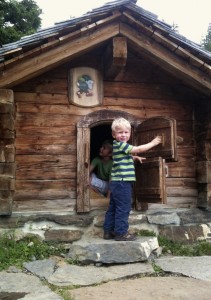 The last day we took the cable car from Meiringen up the Hasliberg mountain to do the Muggestutz hike. The Muggestutz is a Swiss children’s character. He is a white-bearded gnome or dwarf who lives with his family and friends in the mountains. Their stories are told in a number of children’s books and Hasliberg has two trails named for them. We hiked the “Dwarf Adventure Trail” which has stations occasionally with the homes, work places and playgrounds of the dwarfs to keep the kids interested. Unfortunately, about halfway down, clouds blew in and began to rain on us, so we had to hurry past the rest of the trail and begin our journey home.
The last day we took the cable car from Meiringen up the Hasliberg mountain to do the Muggestutz hike. The Muggestutz is a Swiss children’s character. He is a white-bearded gnome or dwarf who lives with his family and friends in the mountains. Their stories are told in a number of children’s books and Hasliberg has two trails named for them. We hiked the “Dwarf Adventure Trail” which has stations occasionally with the homes, work places and playgrounds of the dwarfs to keep the kids interested. Unfortunately, about halfway down, clouds blew in and began to rain on us, so we had to hurry past the rest of the trail and begin our journey home.

